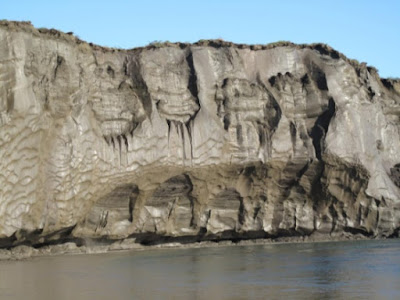Observational Evidence for One Ice Age
Secular geologists have upped the ante on the number of ice ages to about fifty, but biblical creation scientists maintain that there was only one. A big problem for secular scientists is that their concepts are inconsistent, and other problem is the failed Milankovitch Theory. New evidence supports a creation science Ice Age model.
Multiple ice ages are forced into the Milankovitch Theory for the sake of the deep-time narrative, but the actual evidence supports only one Ice Age — which was subsequent to the Genesis Flood. Yedoma is permafrost containing organic material and a passel of ice. These yedomas have been associated with climate change (both for today and climate fluctuations found in Greenland ice cores), but fears of them influencing climate today do not seem based on good science. Yedomas cause insurmountable problems for uniformitarian geologists.
 |
| Yedoma containing large ice wedges in northern Alaska Credit: Mikhail Kanevskiy; University of Alaska Fairbanks, Institute of Northern Engineering via USGS (PD) |
A revival of the astronomical theory of the Ice Age caused this shift from four to eventually 50 ice ages. It started from a paradigm-changing ‘verification’ of the astronomical theory of the ice ages by Hays and colleagues. The astronomical theory has since been assumed as fact, and has been used extensively for Ice Age research and dating pre-Ice Age strata. A new reinforcement syndrome was established.
. . .
Just recently, another indicator of just one ice age has emerged. Yedomas are a special type of permafrost that contain a large amount of organic matter (about 2% carbon by mass) and from 50 to 80% ice by volume. The ice is in the form of large ice wedges and ice layers and lenses. Permafrost covers 23 million km, or 24%, of land in the Northern Hemisphere. Yedomas cover substantially less—1,387,000 km in north-east Siberia, Alaska, and Yukon Territory of north-west Canada. They are often tens of metres thick with a maximum of about 50 m. Permafrost was 52% greater at the peak of the Ice Age than today, having expanded south of the boundaries of the ice sheets and subsequently melted back toward higher latitude.It would be really cool if you would read the entire article. Just click on "Yedomas show one ice age".